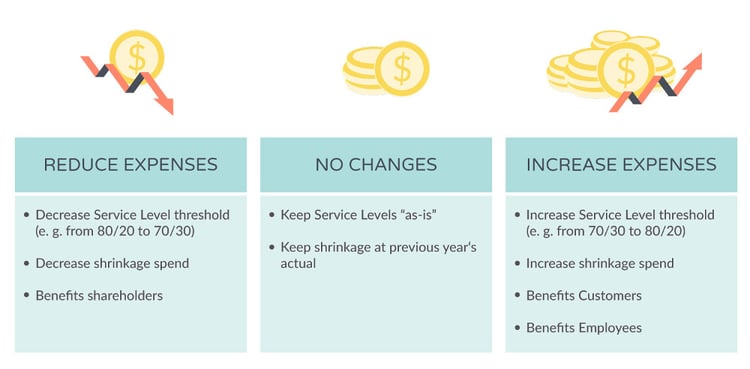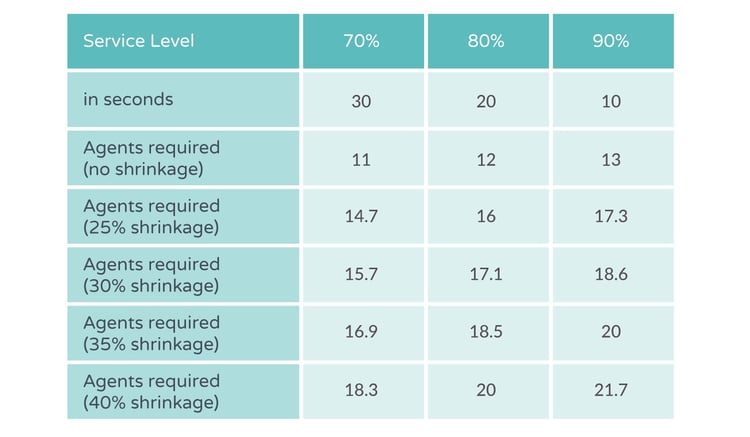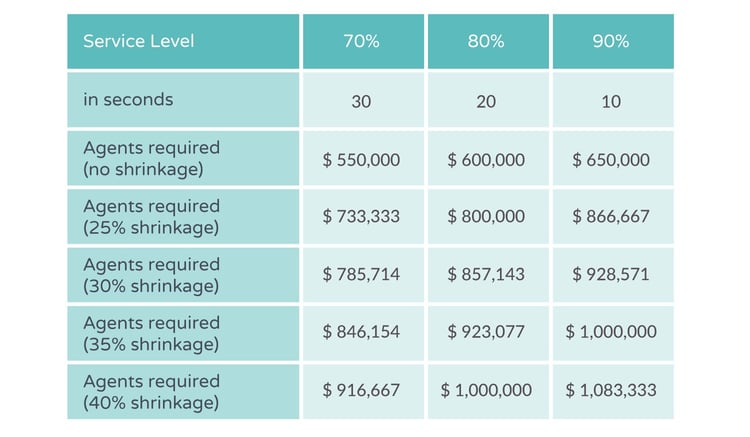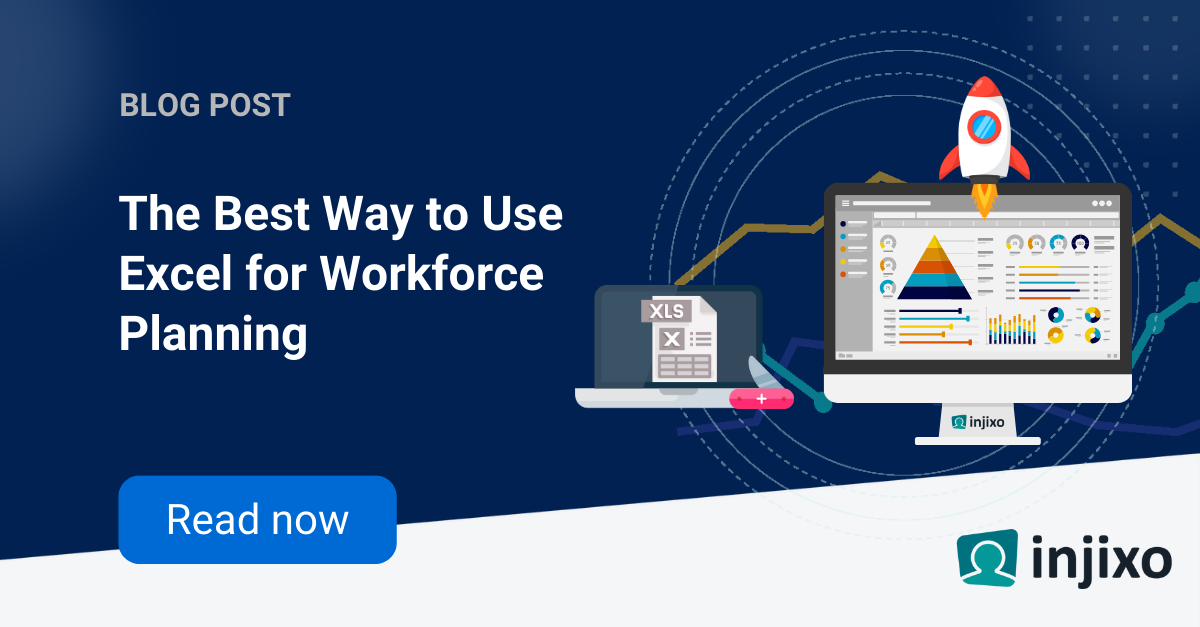It’s that time of year again! For the many businesses that run on a calendar planning year, budgets are being created. Often, the workforce management team doesn’t play a large role in this process, but we should. I want to share with you some ways your workforce management team can help inform this process.
First, here is how workforce budgeting generally happens in a business:
- The business creates an “Operating Plan” for the following year.
- This is generally tied to a longer-term strategic plan
- The Operating Plan sets the priorities and metric targets for the company
- Key elements of the Operating Plan are:
- Revenue Expectations (how much money are we going to take in)
- Margin Requirements (what does our profit margin need to be for shareholders)
- Simple math then gets you to the amount of money available for expenses
- Example - If you are going to bring in $1M and need a 50% margin, you can spend $500K
- Once the expenses are determined, leadership determines how much will go to direct labor (e.g. agents taking phone calls), vs. support (IT, HR, Finance, Operations leadership and support groups) and any other expected expenses.
- Results are disseminated to the organization to set department targets and hiring plans.
We call the outcome of this process the “Top Down” headcount requirements, because the number of staff you can afford for contacts comes from the top. Many contact centers find themselves consistently understaffed because these Top Down requirements get pushed through. It is sometimes accompanied with an abstract requirement to “just make it work”. If only it was that easy! You need to develop a “Bottom Up” staff requirement, and the best way to do it is to provide headcount requirements with cost, and show scenarios and options.
So, what role does workforce management play here? Well, there are two ways to view the funding for resources to handle contacts. The first is what the business can afford to spend (Top Down). The second is what is actually required to achieve a service level (Bottom Up). That second part is a big opportunity because the difference in staff required can vary significantly based on service level requirements and shrinkage. As a critical partner in the business, WFM can frame up the conversation and provide the data.
How to think about service level and shrinkage in the context of budgeting and spend

The graphic above shows how you should look at your options as you start to build your Bottom Up requirement. In the baseline forecast (before plotting in any growth in volumes), either everything stays the same, you spend more, or you spend less. It’s a simple but powerful view to facilitate discussions around the variables that drive staffing. Without this baseline conversation, the conversation can get messy, because volumes change and handle time can change. Both of these factors will be layered in. You lose sight of the baseline without first looking at service level and shrinkage.
Take a look at the example below with agent requirements for all scenarios, all with 100 calls per hour at a 300 second AHT.

This has been simplified for the purpose of illustration. For full year planning, you would also have to look at how you actually apply the staff throughout the year. But to illustrate the point, these are the requirements WFM should provide. Notice that it’s not just one answer, you have several different scenarios in a very simple chart. Using this information, the leadership can decide if it’s worth changing service level requirements - either to save money, or to spend more and increase customer accessibility. This is also a very nice guide to show the impact of shrinkage on the headcount requirements.
Assuming a $50K/year cost per agent, this is how the costs would stack up for operations:

It’s worth noting that using the same call volume and AHT assumptions, the costs can go from $550K to almost $1.1M, which is double. It’s absolutely critical that this is transparent so decisions can be made. No call center operates with zero shrinkage. Having it as a point of reference though really drives home the impact. Often shrinkage is relatively unmanaged and seen as a “cost of doing business”. You can see sharp differences in requirements based on service levels as well as the volume scales. It’s not a large difference at 100 calls per hour for just this one queue.
The best workforce management teams will run scenarios for business leaders. Organizational leaders have to make the trade-off calls to balance the needs of the customers (service-level), employees (shrinkage) and shareholders (profit). In order to make those critical decisions, leadership needs solid data and analysis from workforce management. The data tells them what the numbers will do and the analysis tells them the impact of that. For example, in theory you can staff to a 20% service level and spend less on labor. However, if you do that, your occupancy will likely be in the 90%+ range and it will drive employee burnout and increase attrition. There are both employee impacts and costs of replacement associated with this decision.
So, how does this all come together?
After you have run scenarios and leadership has agreed on the Bottom Up requirement, that needs to be reconciled with the Top Down requirement. Without that reconciliation, the work on the Bottom Up requirement is a purely academic exercise. If the business adopts the Bottom Up requirement and agrees to the variables as planned, then everything is aligned. If that doesn’t happen, and the final number of employees funded is less than your requirement, then the workforce management team needs to publish the expected service levels. Doing this ensures there is full transparency and expectations are clear. There is a gap between what is needed and what is funded. That means lower service levels (or last-minute overtime, resulting in the costs exceeding budget).
It can take a few annual planning cycles for this process to fully mature. Start simple. Publish your requirements, present scenarios that show service level and/or shrinkage options. Identify gaps between what you are getting in staff versus what you need. This will prompt healthy conversations, and lead you on the path toward setting you and the business up for success.
Did you find the article interesting and would like to share it with your colleagues? Download the article as a PDF.





